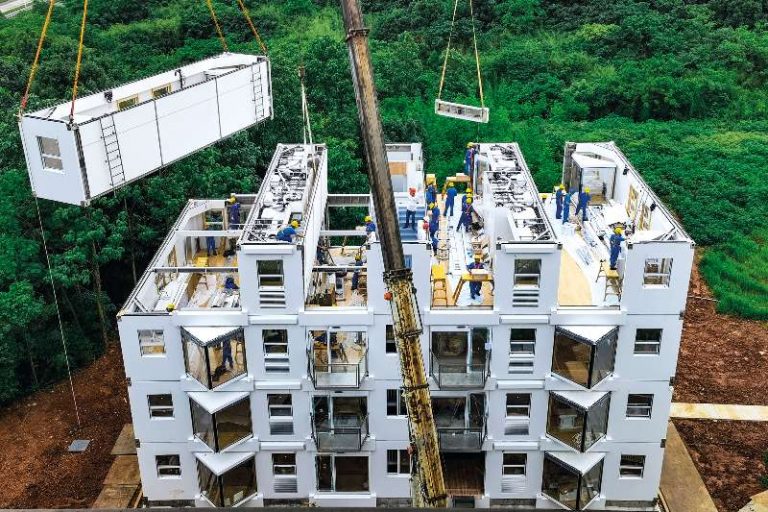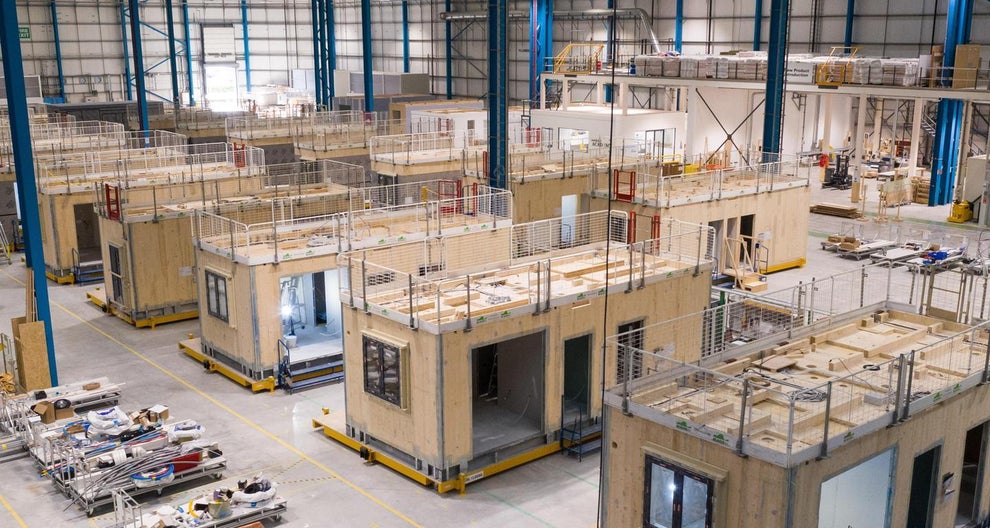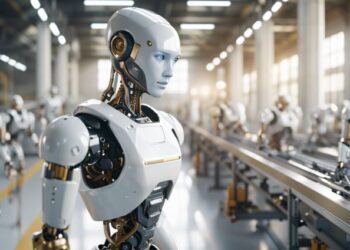Picture a typical construction site: a chaotic ballet of mud, noise, and exposed frameworks, vulnerable to the whims of weather and plagued by delays. For centuries, this has been the accepted reality of bringing a building to life. Now, imagine a different approach: one where up to 90% of a building is crafted in a clean, climate-controlled factory, then transported to the site and assembled in a matter of days. This is not a futuristic vision; it is the powerful reality of modular construction, a disruptive force that is fundamentally reshaping the building industry from the ground up.
Often misunderstood and unfairly burdened by the “prefab” stereotypes of the past, modern modular construction is a sophisticated, technology-driven process that offers unparalleled advantages in speed, quality, safety, and sustainability. It represents a paradigm shift from a sequential, site-based activity to a parallel, manufacturing-led discipline. As the world grapples with housing shortages, soaring construction costs, and a skilled labor deficit, modular construction is emerging not just as an alternative, but as a critical solution to building the infrastructure of the 21st century.
This in-depth article will deconstruct the modular method. We will journey through the factory-first process, analyze the compelling advantages driving its global adoption, honestly assess its challenges, explore its diverse applications, and look ahead to the technological innovations that will define its future. This is the story of how building with blocks, much like LEGOs, is becoming the most innovative way to build our world.
Defining Modular: More Than Just a Box
Before diving deeper, it’s crucial to clarify what modular construction truly is and differentiate it from its prefabricated cousins. While all modular construction is a form of prefabrication, not all prefabrication is modular.
The key distinction lies in the degree of completion. The term “modular” specifically refers to a process where three-dimensional volumetric units, or “modules,” are constructed off-site. These aren’t just flat panels; they are complete sections of a building. A module for an apartment building, for example, might leave the factory with walls, flooring, windows, plumbing, wiring, and even kitchen cabinets and bathroom fixtures already installed.
This can be contrasted with other off-site methods:
- Panelized Construction: Flat wall, floor, or roof panels are built in a factory and then shipped to the site for assembly. It’s like building a model airplane from its constituent parts.
- Prefabricated Components: This involves manufacturing specific elements, like roof trusses or pre-cast concrete stairs, which are then integrated into a traditionally built structure.
Modular construction is the most complete form of off-site building, aiming to maximize factory work to minimize on-site activity. The modules are engineered to be structurally independent and are transported to the site, where they are craned into place and “stitched” together, forming a complete, cohesive building.
The Factory-First Process: A Manufacturing Revolution
The magic of modular lies in its highly organized and parallel workflow, which transforms the unpredictable art of construction into a precise science of manufacturing. This process can be broken down into five distinct, yet overlapping, phases.
A. Digital Design and Engineering (BIM) The modular journey begins not with a shovel, but with a mouse. Before a single piece of steel is cut, the entire building is constructed virtually using Building Information Modeling (BIM) software. BIM creates a highly detailed, data-rich 3D model that serves as the single source of truth for the project. Every structural beam, electrical outlet, plumbing pipe, and window frame is precisely mapped out. This intensive upfront design phase is critical because, unlike traditional construction, on-the-fly changes are difficult and costly once production begins. This “measure twice, cut once” philosophy eliminates the guesswork and costly rework that plague conventional building sites, locking in design and budget certainty from day one.
B. Controlled Factory Production Once the digital blueprint is finalized, it is sent to the factory floor, which resembles a sophisticated manufacturing assembly line more than a construction site. The process is systematic:
- Framing: Structural skeletons for each module are built, typically from steel or wood, in precise jigs to ensure perfect consistency.
- MEP & Services: This is where the true efficiency shines. Plumbers, electricians, and HVAC technicians work in tandem at dedicated stations, installing all the necessary wiring, piping, and ductwork into the open frames. This is safer and faster than working on ladders and scaffolding on a multi-story site.
- Finishing: Modules move down the line to have insulation, drywall, windows, and doors installed. They are then painted, and flooring is laid. In the final stages, fixtures like sinks, toilets, cabinets, and lighting are installed and tested.
- Quality Control: At every single station, dedicated inspectors conduct rigorous quality checks. This ensures that by the time a module is complete, it meets or exceeds all building codes and quality standards, a level of oversight that is nearly impossible to replicate in the field.
C. Concurrent Site Preparation While the modules are being manufactured in the factory, a separate team is at work on the actual project site. This parallel activity is the secret to modular’s incredible speed. Instead of waiting for the structure to be built before starting groundwork, the site team can immediately begin excavation, pouring the foundation, and installing underground utilities (water, sewer, power). By the time the completed modules are ready to ship, the site is fully prepared to receive them.
D. Transportation and Logistics Finished modules are wrapped in weatherproof material and loaded onto specialized trucks for transport. This phase requires meticulous logistical planning. The size of the modules is often limited by the capacity of roads, bridges, and overhead power lines along the route. Project managers must carefully map out the journey and secure the necessary permits, making transportation a key consideration from the earliest design stages.
E. On-Site Assembly and Finishing This is the most dramatic and rewarding phase. In a process that can take just a few days or weeks—instead of many months—a large crane carefully lifts each module from its transport and sets it into place on the foundation. Crews guide the modules, connecting them structurally to each other and to the foundation. This assembly is often called “the stitch.” Once the modules are secured, the final work begins: connecting the inter-module electrical and plumbing systems, completing roofing and exterior cladding, and performing minor touch-ups to drywall and paint at the seams. In a remarkably short time, a fully-formed building emerges.
The Compelling Advantages Driving Modular Adoption

The shift toward modular construction is not driven by novelty but by a set of powerful, tangible benefits that address the core pain points of the traditional building industry.
A. Dramatically Accelerated Timelines The ability to perform site work and building construction simultaneously can slash project timelines by as much as 30% to 50%. A hotel or apartment complex that would take 18 months to build traditionally might be completed in just 9-12 months using modular methods. This speed is a massive financial advantage, allowing developers to start generating revenue sooner and reducing loan interest costs.
B. Superior Quality and Consistency The factory environment provides unparalleled quality control. Every step is standardized, performed by a specialized workforce, and protected from the elements. There are no delays due to rain or snow, and materials are not damaged by moisture or sun exposure. The result is a tighter, more precisely built structure with fewer defects and greater long-term durability.
C. Enhanced Worker Safety and Site Security Construction is notoriously one of the most dangerous industries. By moving the bulk of the work into a controlled factory, modular construction drastically reduces risks. Workers operate on stable ground-level platforms instead of high scaffolding, and weather-related hazards are eliminated. Furthermore, having fewer workers and valuable materials on a condensed on-site schedule significantly reduces the risk of theft and vandalism.
D. Greater Cost Predictability and Potential Savings While the upfront cost of a modular building is not always lower than a traditional one, the overall financial picture is often far more attractive. The BIM process provides cost certainty early on, eliminating the budget overruns common in conventional projects. Savings are realized through:
- Labor Efficiency: A stable, factory-based workforce is more productive.
- Reduced Waste: Materials can be purchased in bulk and scraps are more easily recycled, cutting down on disposal costs.
- Shorter Financing: Faster project completion means less money spent on construction loan interest.
E. A Greener Way to Build Modular construction is inherently more sustainable. The factory process significantly reduces material waste—in some cases by up to 90%—compared to the debris-filled dumpsters of a typical site. The consolidated transportation of modules results in fewer vehicle movements to and from the site, reducing traffic congestion and carbon emissions. The precision-built nature of the modules also leads to tighter building envelopes, improving energy efficiency and lowering the building’s operational carbon footprint over its lifetime.
Navigating the Challenges and Common Misconceptions
Despite its immense benefits, adopting modular construction is not without its hurdles and is still fighting outdated perceptions.
- Design Stigma: The biggest misconception is that modular means “cookie-cutter.” While early prefab was stylistically limited, today’s modular technology allows for a high degree of architectural freedom, including complex facades, custom finishes, and unique layouts. Many award-winning, architecturally significant buildings are now built using modular methods.
- Logistical Complexity: Transporting large, heavy modules requires careful planning and can be limited by local infrastructure. This is a primary constraint that influences the size and design of modules from the outset.
- Upfront Capital: The intensive design and engineering phase requires a greater financial commitment earlier in the project timeline compared to traditional builds, which can be a barrier for some developers.
- Industry Inertia: The construction industry is historically slow to change. Many contractors, lenders, and local permitting offices are still unfamiliar with the modular process, creating friction and slowing down adoption in some markets.
Applications Across the Globe: Where Modular Is Making an Impact

The flexibility and efficiency of modular construction have made it a go-to solution across a wide range of sectors.
- Hospitality: Major hotel chains like Marriott and Hilton have become leading adopters. The repetitive nature of hotel rooms is perfectly suited for an assembly line process, allowing them to build and open new properties at an unprecedented rate.
- Multi-Family Housing: In cities facing severe housing crises, modular is being used to rapidly deploy high-quality apartment buildings and affordable housing complexes, delivering units to residents faster than ever before.
- Healthcare: The need for speed and stringent quality control makes modular ideal for building hospitals, clinics, and diagnostic labs, especially in response to emergencies.
- Education: School districts use modular buildings for new classrooms, dormitories, and entire school campuses, minimizing disruption to students by building during summer breaks.
Assembling the World of Tomorrow
Modular construction is no longer a niche concept; it is a mature, sophisticated, and essential component of the modern building industry. It is a direct response to the most pressing challenges of our time, offering a pathway to build faster, smarter, safer, and more sustainably. The factory-first process, driven by digital technology and manufacturing discipline, delivers a level of certainty and quality that traditional methods struggle to match.
As technology continues to advance—with greater integration of robotics, AI, and digital twins—the capabilities of modular will only expand. We are witnessing a fundamental re-imagining of how our built environment is created, shifting from the chaotic construction site to the clean, efficient factory. The future of architecture, housing, and urban development will not just be designed; it will be manufactured and assembled. The modular revolution is here, and it is building our future, one block at a time.













